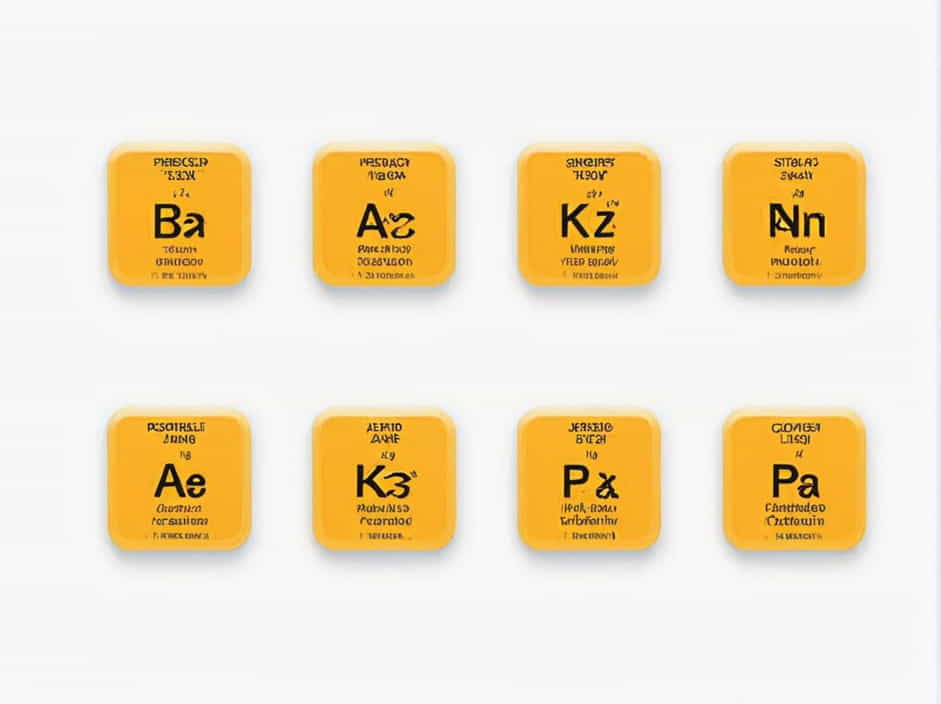The Periodic Table is one of the most essential tools in chemistry. It organizes all known elements based on their atomic number, properties, and recurring trends known as periodicity. Understanding the Periodic Table and periodicity helps in predicting chemical behavior, bonding patterns, and element reactivity.
This guide will explain the structure of the Periodic Table, the trends in periodicity, and common questions and answers related to this topic.
1. Understanding the Periodic Table
The Periodic Table arranges elements in a systematic way based on their atomic number (the number of protons in an atom’s nucleus). It is divided into groups (columns) and periods (rows), each indicating different properties.
1.1 Groups and Periods
- Groups (Vertical Columns, 1-18): Elements in the same group share similar chemical properties because they have the same number of valence electrons.
- Periods (Horizontal Rows, 1-7): As you move across a period, elements gradually change in properties due to increasing atomic number.
1.2 Element Categories
- Metals (Left and center of the table) – Good conductors, malleable, and ductile.
- Nonmetals (Right side of the table) – Poor conductors, brittle, and more likely to gain electrons.
- Metalloids (Border between metals and nonmetals) – Exhibit mixed properties of both metals and nonmetals.
2. Periodicity: Understanding Element Trends
Periodicity refers to the repeating patterns in element properties as you move across periods or down groups. These trends include atomic radius, ionization energy, electronegativity, and reactivity.
2.1 Atomic Radius Trend
- Definition: The distance from the nucleus to the outermost electron.
- Trend Across a Period: Decreases from left to right due to stronger nuclear attraction.
- Trend Down a Group: Increases as more electron shells are added.
2.2 Ionization Energy Trend
- Definition: The energy required to remove an electron from an atom.
- Trend Across a Period: Increases because the nucleus holds electrons more tightly.
- Trend Down a Group: Decreases as outer electrons are farther from the nucleus.
2.3 Electronegativity Trend
- Definition: The ability of an atom to attract electrons in a bond.
- Trend Across a Period: Increases, with fluorine being the most electronegative element.
- Trend Down a Group: Decreases as atomic size increases.
2.4 Reactivity Trend
- Metals: Reactivity increases down a group (e.g., alkali metals).
- Nonmetals: Reactivity decreases down a group (e.g., halogens).
3. Answer Key: Common Periodic Table Questions
3.1 Basic Questions
Q1: What is the purpose of the Periodic Table?
A1: It organizes elements by atomic number, properties, and periodic trends.
Q2: How many elements are on the Periodic Table?
A2: There are currently 118 elements, with more being researched.
Q3: Who created the first Periodic Table?
A3: Dmitri Mendeleev in 1869. He arranged elements by atomic mass, but later it was revised to atomic number.
3.2 Groups and Periods Questions
Q4: What is special about Group 1 elements?
A4: Alkali metals (e.g., sodium, potassium) are very reactive and have one valence electron.
Q5: Why are noble gases (Group 18) unreactive?
A5: They have full valence electron shells, making them chemically stable.
Q6: Which group contains the most reactive nonmetals?
A6: Halogens (Group 17), including fluorine and chlorine, are highly reactive.
3.3 Periodicity and Trends Questions
Q7: Why does atomic radius decrease across a period?
A7: Because the nucleus pulls electrons closer as the number of protons increases.
Q8: Why does ionization energy increase across a period?
A8: Atoms hold onto electrons more strongly due to increased nuclear charge.
Q9: Why is francium the least electronegative element?
A9: Its electrons are far from the nucleus, making it less attractive to additional electrons.
3.4 Chemical Properties Questions
Q10: Why do metals lose electrons easily?
A10: They have low ionization energy and a tendency to form positive ions.
Q11: Why do nonmetals gain electrons?
A11: They have high electronegativity and prefer to complete their valence shell.
Q12: What happens when alkali metals react with water?
A12: They form a metal hydroxide and hydrogen gas, often with an explosive reaction.
4. Importance of Understanding Periodicity
Studying the Periodic Table and periodic trends helps in:
- Predicting element behavior – Knowing how elements react helps in chemistry applications.
- Understanding bonding – Ionic and covalent bonding depend on electronegativity.
- Identifying chemical properties – Trends explain why elements behave differently.
For students and scientists, mastering the Periodic Table and periodicity is essential in chemistry and material science.
5. Summary
- The Periodic Table arranges elements based on atomic number and chemical properties.
- Groups (vertical) share similar valence electron configurations.
- Periods (horizontal) show gradual changes in properties.
- Periodicity trends include atomic radius, ionization energy, electronegativity, and reactivity.
- Understanding these trends helps in predicting element behavior and chemical reactions.
Mastering the Periodic Table and periodicity is a key step in excelling in chemistry!
